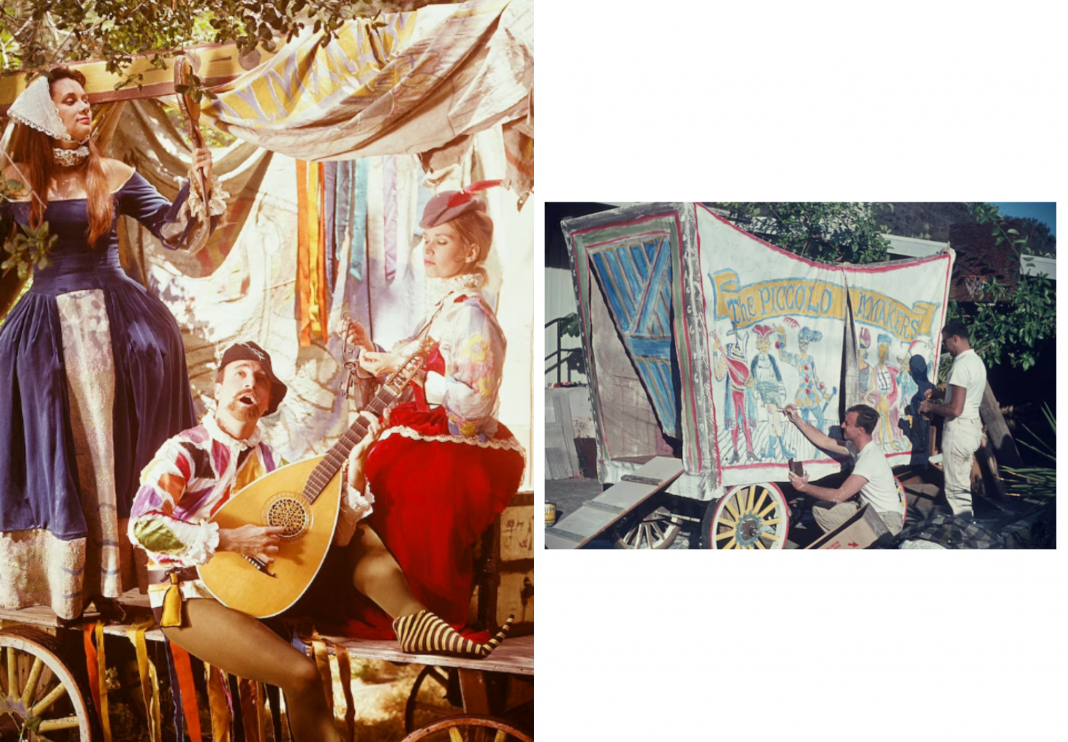For millions of visitors each year, stepping into a Renaissance Fair is a journey back in time, a portal to a whimsical world of knights, jesters, and queens. Yet, the history of these fairs is far more recent than the 16th-century era they aim to recreate. Far from being a direct descendant of medieval markets or Elizabethan festivals, the modern Renaissance Fair is an American invention, a unique blend of historical reenactment, improvisational theater, and counterculture spirit. It emerged not from historical archives, but from the creative minds of educators and artists who sought to bring history to life in a way that was both engaging and interactive. We delve into the surprising and theatrical origins of these beloved events, revealing how they grew from a humble school fundraiser into a sprawling, nationwide phenomenon.
The Birth of a Modern Tradition
The story of the modern Renaissance Fair begins in 1963, in Southern California, with a schoolteacher named Phyllis Patterson. A former actress, Patterson and her husband, Ron, decided to host a unique fundraiser for her children’s school, the Oakwood School. Drawing on her background in theater, she envisioned a “fictional historical event,” a living, breathing theatrical production set in the Elizabethan era. She and her husband rallied a group of fellow artists, teachers, and students to create a small-scale festival with period costumes, performances, and food. The event was an instant success, captivating a small but enthusiastic audience with its unique blend of historical fantasy and interactive theater.

Patterson’s concept was groundbreaking because it was not a rigid, academic reenactment but an immersive and playful experience. She was inspired by the idea that historical theater could be a powerful tool for education and community building. The event’s success led to its continuation, and it soon moved to a new location in Agoura Hills, attracting a growing number of participants and visitors. This original fair, which is still running today as the Original Renaissance Pleasure Faire, became the model for hundreds of similar events across the country.
A Fusion of History and Counterculture

The Renaissance Fair grew to popularity during a pivotal moment in American history: the counterculture movement of the 1960s and 70s. The fairs offered a whimsical escape from the social and political turmoil of the time, a chance to step into a world of magic, art, and community. They attracted a diverse mix of people, from history buffs and theater enthusiasts to hippies and folk music lovers. The fairs became a space where people could embrace a sense of freedom and creativity, expressing themselves through elaborate costumes and character performances.

This fusion of historical fantasy and counterculture spirit is what gives the Renaissance Fair its unique character. It is a place where historical accuracy is often secondary to a sense of playful escapism. The fairs are known for their improvisational humor, their eclectic mix of crafts, and their fantastical elements, such as fairies, elves, and wizards, which are not historically accurate but are now an integral part of the experience. The fairs became a place where people could celebrate their love for fantasy and history in a vibrant, supportive, and communal environment.
The Evolution of the Marketplace and the Performance
Over the years, the Renaissance Fair has evolved into a more complex and professional production. Early fairs were primarily driven by the performances of the cast, but the marketplace has since become a major component. Artisans and craftspeople now flock to the fairs to sell their handmade goods, from leather goods and jewelry to pottery and period clothing. This has transformed the fairs into a major economic engine, supporting a community of artists who are dedicated to their craft.

At the same time, the theatrical element remains at the core of the experience. The fairs are run by a cast of performers who stay in character throughout the day, engaging with visitors in improvised skits and conversations. The royal court, with its king, queen, and attendants, is the central focus of the fair, and the daily events, such as jousting tournaments, knighting ceremonies, and royal parades, are a major draw. The combination of the immersive marketplace and the theatrical performances creates a truly unique and engaging experience that transports visitors to another time.
The Fair Today: A Cultural Phenomenon

Today, the Renaissance Fair is a multi-million-dollar industry, with events held in cities all over the United States and in other parts of the world. It is a place where families, friends, and solo adventurers can come together to celebrate a shared love for history, fantasy, and community. The fairs are a testament to the enduring power of historical reenactment as a form of entertainment and education. They are a place where people can learn about historical crafts, music, and traditions in a fun and interactive way.
Ultimately, the Renaissance Fair is a modern tradition with a theatrical soul. It is a place where the past is not just remembered but is brought to life with a sense of joy and imagination. It is a reminder that history is not just a collection of dates and facts, but a rich and vibrant story that we can all participate in.



